Kittens are some of the most snuggly creatures on the planet.
When you are next to one, you can’t help but run your fingers over her little furry body.
When she snuggles on your lap and purrs lightly, you will want to capture the moment forever.
Did you know that these little fur balls can change their color?
That’s right—some kittens are born with a different color than their actual color, a phenomenon called fever coats.
If you’ve seen your little escape artist transform her coat color within her first year of life, she certainly has a fever coat.
In this guide, we reveal all the facts you need to know about this interesting group of kitties.
What Is Fever Coat?
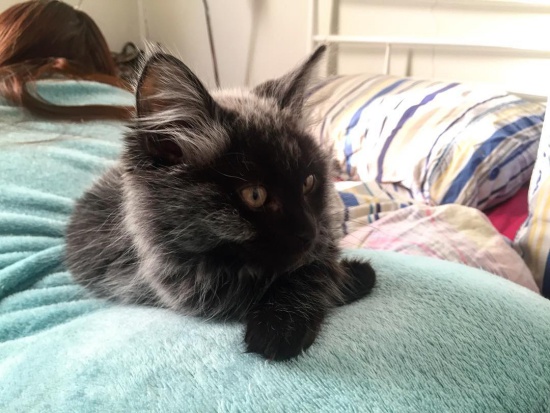
Also called the ‘stress coat’, a fever coat is a condition where a cat gives birth to a litter with grey, red, or silver coats that later change to a different color.
Essentially, a cat with a fever coat has a different color from what would come about as a result of genetics.
Several cats have caught the attention of the internet, thanks to their unique coats.
The first one is Bruce the Cat, a rescued kitty that was born with a silvery coat that later changed to black.
Another recent fever coat case was discovered by the National Kitten Coalition by the name Rizo.
Susan Spaulding found the kitten after a few hours with a silver-colored fever coat that would later turn black.
A stray cat in Los Angeles also gave birth to a litter of seven adorable kittens with distinct coloring in April 2017.
At birth, all the kittens had a beautiful silver coats. As they grew older, all of them transformed into adorable cats of different colors and patterns.
Some turned out to be torties, others tabbies, and one became black with a grey patch on the shoulder.
What Causes Fever Coat?
Although there’s no scientific evidence for the cause of the fever coat, it is believed that the coloring is a result of an inappropriate deposition of pigment in the fur coat.
It happens when a dam is sick, experiences stress during the pregnancy journey, or has an infection.
The trauma affects a feline’s immune system thereby leading to a shift in the color of the cat’s hair follicles.
If the problem induces fever, the cat will have so high temperature in her body that it will shift the color of the kittens to cream, silver, gray, reddish, or silver frosted hues.
Turns out, coat pigmentation is sensitive to heat. When the heat goes higher than the allowed limits, the litter will feature different coats than what they would have.
Is Fever Coat Harmful To The Cat?
Is fever coat bad? Is it harmful to the cat?
Well, although the stress coat phenomenon sounds scary, it is quite harmless for the cat.
There’s no evidence that it is linked to the health of the cat in any way.
No parent with a kitten with a fever coat has ever reported any issue with their kitten.
It does not lead to any health issues or genetic abnormalities.
It only means that the pigment did not develop as it was supposed to in the womb—that the mother of the kitty had an infection and a stress-related condition that affected the color of her babies, nothing more than that.
Unless the fever coloration bothers you, there’s no reason to worry.
Even if it does, you will not have to wait too long before the coloring clears up on its own.
Types Of Fever Coats
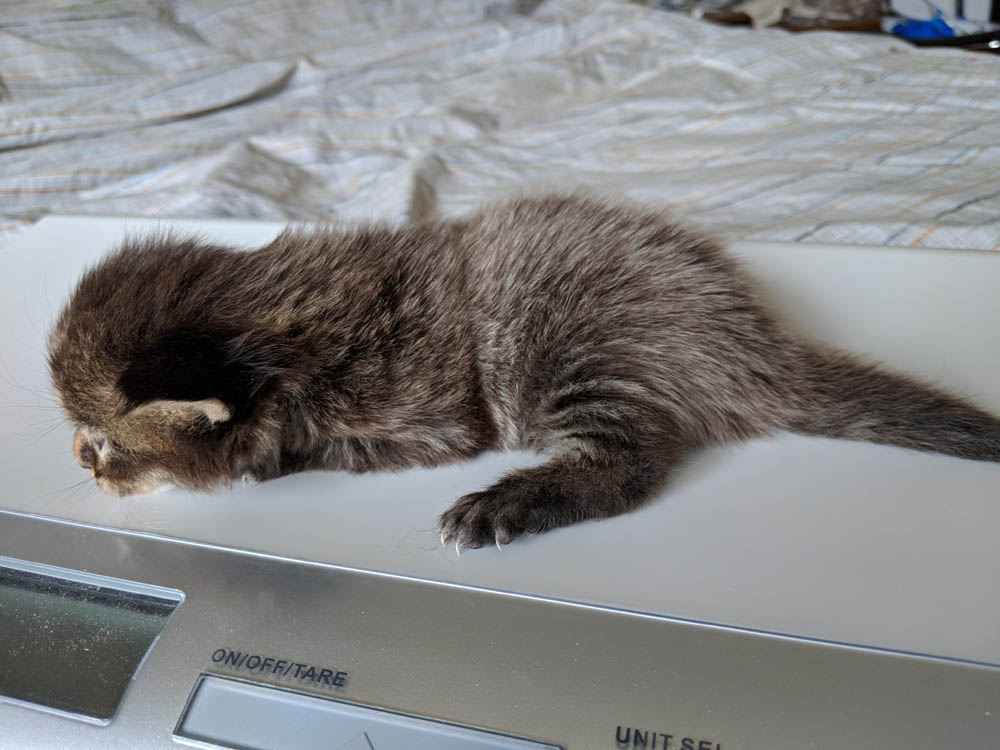
Fever coat manifests in different ways including the following:
- Entire Body: As the name suggests, this is where the stress coat affects the whole body of the kitten. Sometimes, the condition leaves a tiny patch underneath that reveals the true color or pattern of the kitten. For instance, a tabby cat will have cream fur at birth with a hint of unclear patches.
- Stripes: This is somewhat rare but it happens from time to time. In this case, the kitten will have parallel stripes of different colors along the back. Some resemble chipmunks and others tiny skunks.
- Patches: In rare circumstances, the fever coat mixes with the natural color of the kitten. A good example is a tabby cat that has a normal color on the head, paws, and tail while the entire body has a stress coat.
How To Tell If The Kitten Has Fever Coat
Does my cat have fever coat?
If you are looking for a quick answer to the above question, know that you are not alone…
Fever coats can be easily confused with the undeveloped color common with color-pointed cat breeds such as the Himalayan and the Siamese. However, the two are totally different.
The latter is a condition caused by a low temperature of under 100 degrees. This is lower than the temperature of the womb (check the “Fever Coat vs Color Points” section below).
The outcome is a cream-colored cat with the cool regions of the bodies including the paws, tail, body, ear tips, and face having a different color.
To know if your kitten has a fever coat, you will have to wait for a while.
The coloring should clear up in a few weeks or months exposing the true color of the kitty.
If he is a point, his fur will get darker by the day.
Are Fever Coat Kittens Rare?
So, how common is fever coat?
Well, cats with fever coats are not your everyday cats. They are quite rare.
Perhaps not as rare as chocolate, smoke, or lilac kitties but don’t expect to walk into your rescue center and find a fever coat cat. You’d be lucky if you came across one.
Breeders have a habit of selling kittens with stress coats as rare. They do this to push the price over the roof.
Others lie to potential customers that fever coats are smokes in the hopes of making a huge killing.
Smoke cats are sought-after because they are truly rare and unusual.
Unsuspecting clients often get shocked when their kitties turn color and become normal-colored felines.
Is Fever Coat Permanent? When Does Fever Coat Go Away?
Fever coat is a temporary coloring. No adult cat has a stress coat. Those that do are either smokes or point-colored kitties.
Generally, the condition goes away from 4-8 months.
In the case of Bruce the Cat, the coloring went away completely after 8 months.
Some kitties turn color earlier than others. If yours doesn’t reveal its normal color by the age of six, don’t panic.
Give it two or three months before you conclude. If the color remains the same after 8 months, it simply means that the cat is a smoke, silver, or a color-point.
Sometimes, it’s hard to tell the difference between these color and pattern variations.
These before and after fever coat kittens pictures are a perfect illustration of the transitory nature of fever coat:
At birth, this kitty (Bane) was born with fever coat and appears lighter
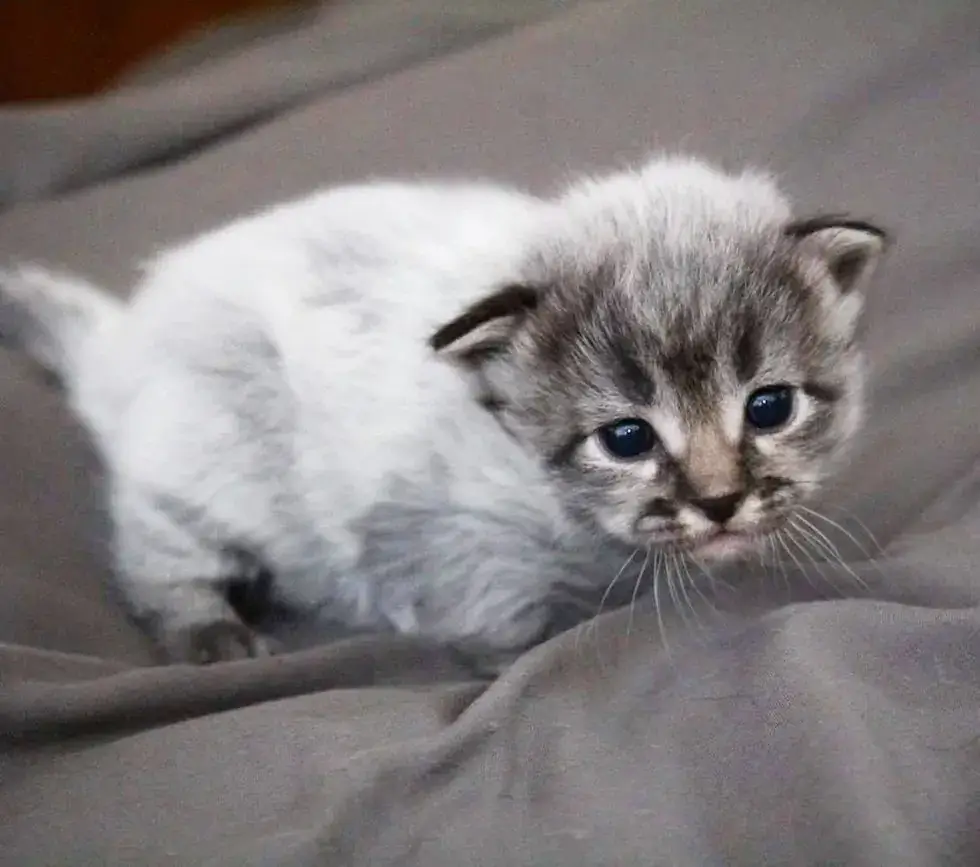
As he got bigger, he manifested natural tabby patterns
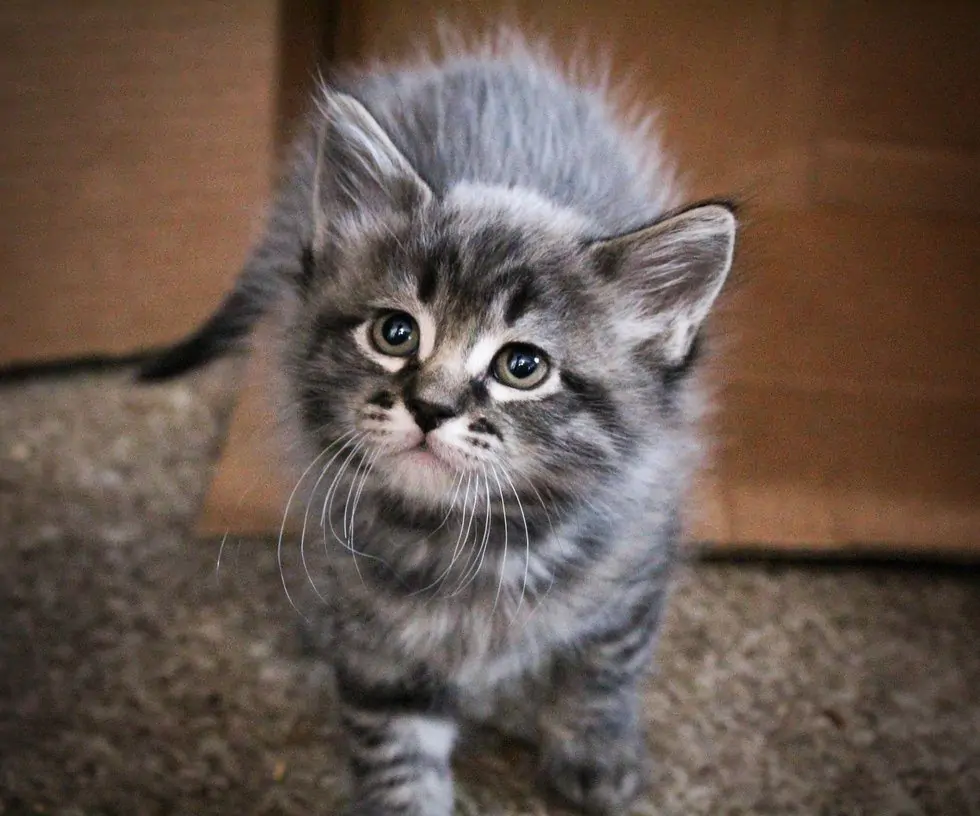
His sibling, Venom, was also born with a white body and a black head and paws.
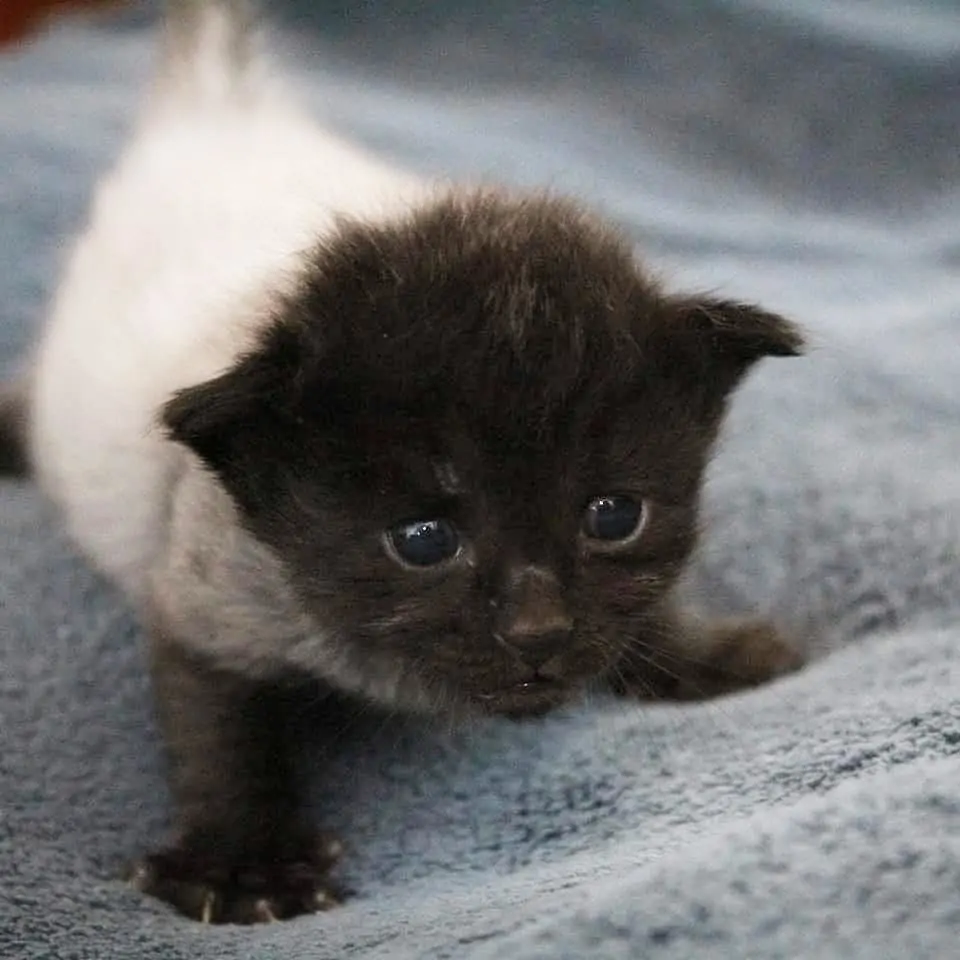
He later grew into a stunning panther kitty.
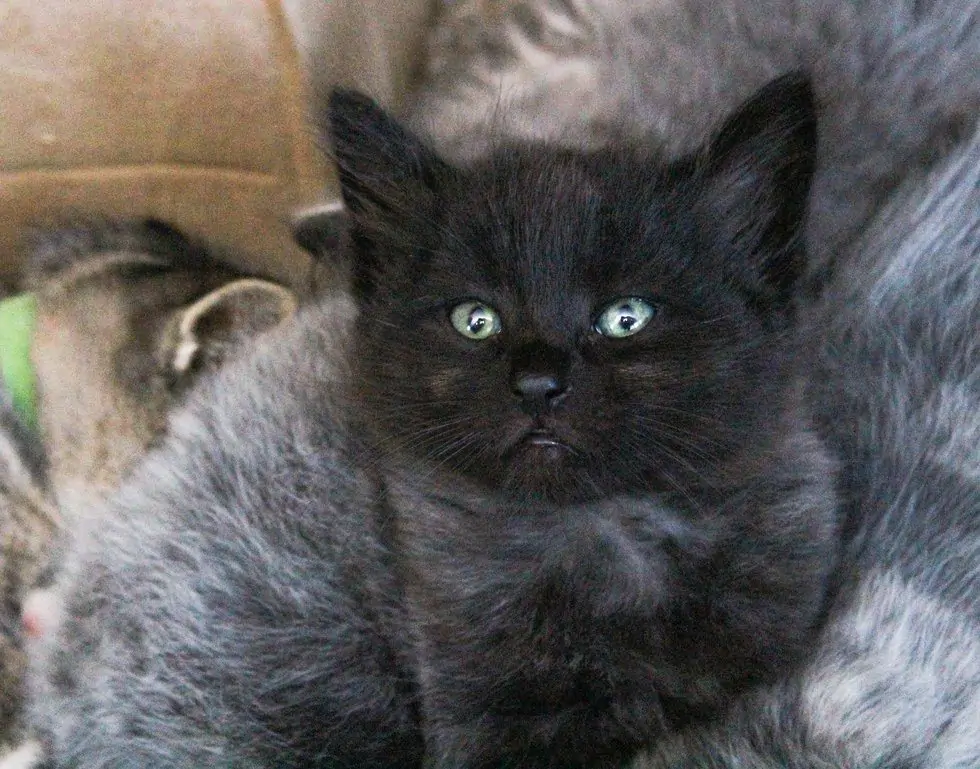
Source of Bane and Venom images: Animal Chanel
Does Fever Coat Affect The Whole Litter?
Fever coat may or may not affect the entire litter.
It really depends on the cause of the coloration and how it manifests in the pregnant cat’s body.
For instance, if an infection affecting the cat doesn’t affect some of the kittens in the litter, some of them will escape with intact coats.
Younger kittens are often the most affected with fever coats.
In most instances, though, the entire litter comes out with fever coats.
Fever, one of the biggest causes of the phenomenon causes a uniform temperature rise within the womb. As a result, all the kittens end up with this special coloration.
Medication and trauma on the queen’s part also mostly get to the entire litter.
In short, there’s no telling if a fever coat will affect the whole litter or a select few kittens.
Black smoke vs. Fever coat

A smoke cat looks somewhat like a fever coat but instead of having an entire color on the fur, he will have color on the tips while the rooms will be white.
You can tell a smoke from parting your kitty’s fur. You should be able to perceive that the fur is bright white while the tips are darker.
All smoke cats have a solid color. A tabby cannot be called smoke for this reason.
The smoke effect is more common and noticeable on long-haired felines.
Since their hairs are longer, the white part is more visible.
Smoke cats often have manes with white fur but the coloring can also be seen in body parts with the longest hairs.
The smoke effect in cats is caused by the inhibitor gene whose responsibility is to hinder the cat’s ability to produce pigment in the fur.
To be more exact, the gene inhibits the production of pigment at the base of the fur for non-agouti felines.
For agouti cats, the gene affects red pigment production. A smoke cat has to have a dominant allele of the coat color gene and be a recessive homozygote for the pigment gene (d/d).
A black smoke cat is basically a black cat with white roots and some coloring behind the ears and the neck.
If it is a long-haired breed, the cat will have a neck full of brightly colored fur that makes him appear as though he is wearing a neck scarf.
Short-haired black smokes appear to have a ring around their necks.
A fever coat has a silver, gray, cream, or red color over the whole body. He can also have patches or stripes as mentioned above.
A black smoke, on the other hand, is a black cat whose fur has white roots.
To tell one from the other, split the fur. If the kitten has bright roots in her body or certain parts, she is a smoke.
Else, if the roots are black or silver all the way, she is a fever coat. In such a case, the coloring will disappear over time.
Fever Coat vs Color Points

If you don’t know much about cat colorations, it is easy to confuse a fever coat with a color-pointed coat. However, the two terms, albeit related, mean two different things.
Fever coat is a temporary phenomenon where a kitten develops a smokey coat that is different from what she would have otherwise been born with.
Color-point, on the other hand, is a permanent feline coat color that causes a cat’s body to have darker extremities and a pale body.
So, such a kitty would have a dark face, feet, ears, tail, and scrotum (in the case of a male kitty).
The color comes about because of the presence of the albinism gene. In a color-point cat, the gene for albinism prevents the color pigment in the kitty’s coat.
The color-point gene is temperature-sensitive. In areas that are low in temperature, the gene is active no wonder pigmentation is present in the extremities.
It comes about when the momma cat has a fever with kittens in her utero. As the fetuses are exposed to high temperatures, less pigment is produced hence the warmer body parts remain pale as the cooler parts are darkened.
The color-point phenomenon is most common in Siamese cat breeds. Others such as the Balinese, Himalayan, Burman, Snowsole, and Ragdoll may also feature this coloration.
The main difference between the fever coat and color-point is that the former is temporary while the latter is permanent.
A fever coat clears after around 4-12 months of age while the color-point is pretty much unchanged even as the kitten grows into an adult.
Also, the main cause of color-point is temperature changes in the womb while fever coats can come about because of temperature, stress, and medical conditions.
The way in which both colorations present in the cat’s body is also slightly varied.
Fever-coated cats have consistent smokey coats throughout their bodies or some parts of it while color-pointed felines are strictly darker on the extremities and pale on the rest of the body.
Other Causes Of Coat Color Changes
A cat’s coat may change its color for many other reasons apart from the fever coat phenomenon. Here are some of the leading ones:
I. Allergies And Skin Infection
Firstly, a change in your cat’s coat color is possibly a result of a skin allergy or infection.
These problems trigger over-grooming and thus the deposition of more saliva on the skin.
In case you aren’t aware, saliva contains pigments from red blood cells that tend to discolor the coat a little.
II. Vitiligo
Vitiligo doesn’t occur often among felines but when it does, it causes the skin to lose its pigmentation.
In the end, the kitty will develop white patches and spots around his body.
III. Exposure to the Sun
Intense rays from the sun have been known to bleach dark feline fur.
If your kitty spends time outside a lot, don’t be shocked if his fur becomes a little lighter than usual.
Too much exposure to the sun can also trigger solar dermatitis—a very serious medical condition.
IV. Diet
Diet is another big player when it comes to the color of your kitty’s coat.
Certain nutrients in cat food determine the color of the kitty’s fur. The most important is tyrosine – an essential amino acid produced by a cat’s body.
A cat needs an average of 5g or more of tyrosine per day according to the Journal of Small Animal Practice.
When there’s a tyrosine deficiency, a dark-coated coat may turn slightly lighter.
V. Aging
Like human beings, some cats simply go gray as they age.
If you own a black cat, expect his fur to take on a dull washed-out color as he gets older.
Gray hairs will spring up here and there, and there’s very little you can do about it.
Final Thoughts
When your adorable kitty changes the color of his fur all of a sudden, it can be a confusing time for you.
If you are not knowledgeable about what is going on, it is easy to think that your kitty is suffering from something deadly.
However, don’t be. The condition not only clears on its own but also poses no health risk to the kitty.

Hi! I am Eleanor Price. I started this website after my cat, Louie, almost died from a case of botulism (a type of food poisoning often caused by bacteria that grow on food items). Turned out that my cat’s diet was the problem. I have made it my duty to provide the best information and recommendations about everything cat lovers need to know about their felines’ health and wellbeing. My goal is to find the most informative content on anything feline-related and share it with fellow hardworking kitty lovers.

